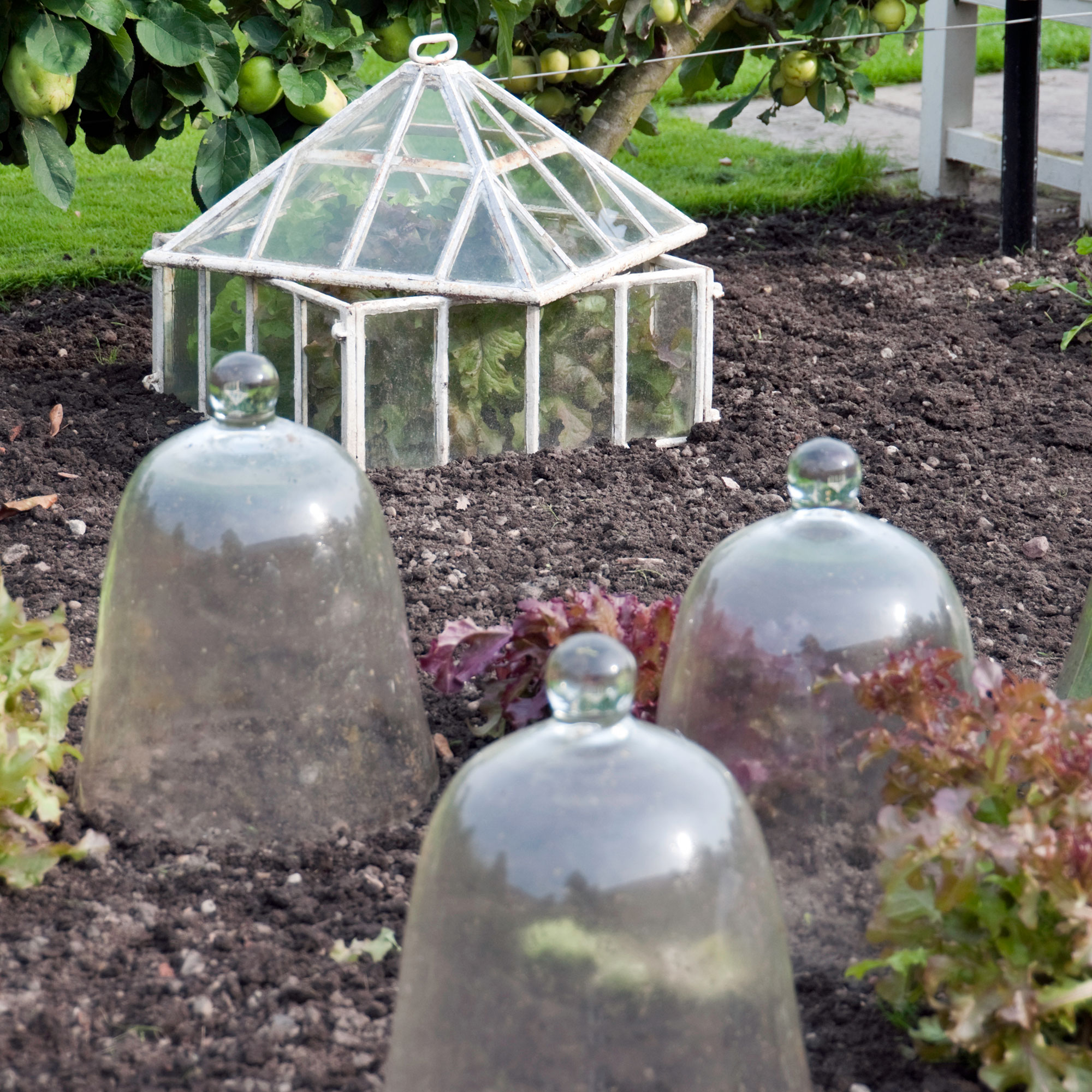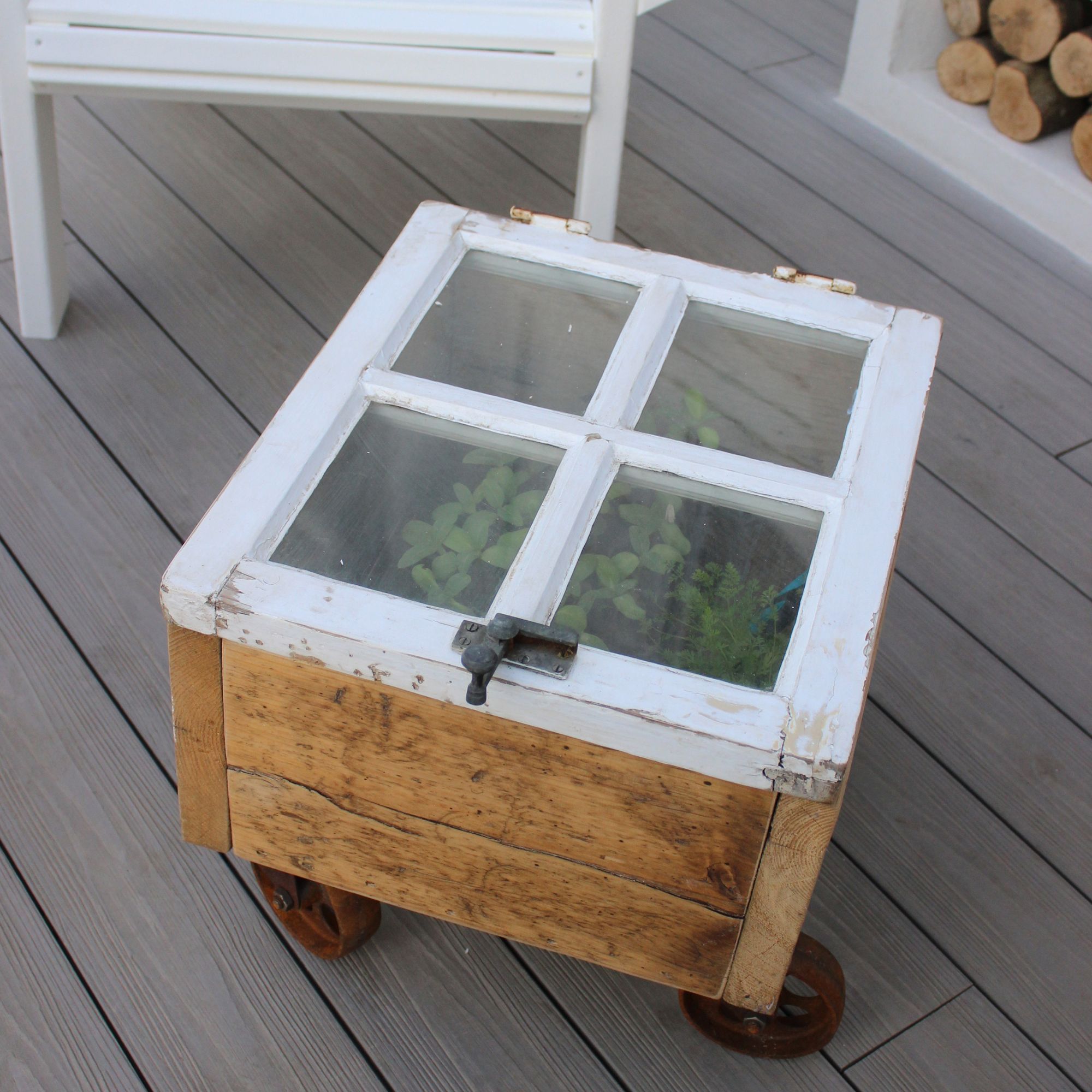
You might not think that you need to learn how to use a garden cloche, but it's one of those nifty tools that will absolutely transform the way you garden.
It's one of those terms that most have-a-go gardeners stumbles across when scouring the internet for the best plant covers to protect their garden from frost. And, when you're in the process of overwintering, it's well worth looking into – particularly if you don't have a greenhouse.
'The science behind cloches is fascinating; they create a greenhouse effect by trapping solar radiation and converting it to heat, potentially raising soil temperatures by 8-12°C,' says Steven Bell, the CEO of Paving Shopper.
'This temperature increase significantly accelerates seed germination and plant growth rates,' he adds, noting that he 'witnessed first-hand how these remarkable tools saved an entire crop of early lettuce' during a particularly harsh spring in Surrey.
To that end, here's how to use a cloche in a garden for yourself.
What you will need
Before you learn how to use a cloche in a garden, you need to determine which type of cloche is right for you – because, as Steven points out, there are several types to choose from.
'The real magic of cloches lies in their versatility,' he says. 'Traditional glass cloches, like these Victorian Style Cast Iron Cloche from Sarah Raven, maintain more stable temperatures than plastic ones.'
Still, as Steven goes on to explain, there are benefits to going plastic, as modern polycarbonate versions (like this Mini Greenhouse Cloche from Thompson & Morgan or the Bell Cloche Garden Protection from Amazon) offer excellent UV protection while being more durable.
Step-by-step guide
When it comes to mastering how to use a cloche in a garden, there are a few things to consider – mainly around where you use it.

1. Let there be light
As you'd likely expect when using a cloche in a garden, sunlight is the source of all its magic.
'It’s important to ensure the plants still get plenty of sunlight so depending on the material being used and if the daytime temperatures are high enough, it can be worth removing the cloche in the day and putting it back before night,' says Morris Hankinson, director of Hopes Grove Nurseries.
'Some cloches have vents or ends of cloche tunnels can be opened as and when needed to allow air flow to the plants,' he adds.
2. Maintain good airflow
You definitely don't want to create an airtight environment within your garden cloche (it's not a biosphere!). In fact, 'proper ventilation prevents humidity-related diseases,' says Steven.
'I learned this lesson when working in a heritage garden – a simple 2-inch gap for airflow made all the difference between thriving plants and damping off.'
3. Make sure there's enough space
You don't have to buy a garden cloche; there are plenty of upcycling ideas for the garden that will help you to achieve the same effect as any ready-made one... so long as they're roomy enough.
'Make sure when using a cloche, it is big enough so that it completely covers the plants with enough room for the plants to grow underneath as well,' says Morris.

'The cloche shouldn’t touch the plants,' he adds.
4. Keep a watchful eye
You may know exactly how to use a cloche in a garden, but all of that information is useless if you don't keep a wary eye on your plants.
'It’s important to keep a check on plants growing under cloches for signs of pests and diseases, algae on the cloche or if inside is getting too moist,' warns Morris.
'These can be a sign of low air flow and too much warmth.'

5. And remember, easy does it!
When the weather warms up (we promise summer is on the horizon!), you'll likely want to whip your cloche off immediately: don't do this.
'It’s important to allow the plants time to adjust to the outside weather without the cloche, which can eventually be removed,' says Morris.

'Remove the cloche for a few hours each day and extend the time over a week or two before removing it entirely when frosts have ended and the weather is warmer,' he adds.
FAQs
Do cloches stop slugs?
Trying to suss out how to get rid of slugs? Cloches aren't necessarily the answer, although you can purchase an innovative copper rimmed cloche from Crocusto keep these pesky pests away from your beloved plants.
What can I put under a cloche?
Not sure what you can put under a cloche? Morris says that 'if you have sown seeds or planted out young plants, cloches are perfect to keep them protected from frosty weather and pests'.
You can also use a cloche to cover and protect low-growing plants such as vegetables and fruits (strawberries, peppers and tomatoes, for example), as well as ornamental plants and cut flowers.
'It’s always useful to have a garden cloche available to use when needed in the garden, especially with the UK's unpredictable weather,' finishes Morris, who says that, when used appropriately, they can even help to warm the soil and extend the growing season.
If you'll excuse us, then, we're off to nab a few cloches in the sales.







